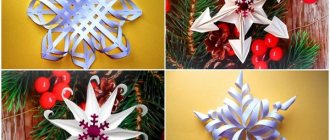Anyone can have their own artificial bonsai, the main thing is that the person is willing to spend several hours of his time. The craze for miniature trees in small pots came to Eastern Europe several decades ago. It all started with small exhibitions dedicated to Eastern themes, and ended with full distribution in apartments and offices.
Japanese art of bonsai: stories and traditions
When creating each composition, it is allowed to use only natural materials. Residents of Asia are very sensitive to the environment, so when creating a miniature tree they give preference to oak, maple, aspen and a number of other elements. Designers and specialists in the field of Eastern culture note that the art of bonsai is based on a harmonious combination of 5 elements. Of course, European residents do not follow all the recommendations so zealously.
That is why when creating a composition, only a few recommendations are followed:
- It is undesirable to place a large amount of decorative materials on the crown;
- Prohibition on installation on the sunny side;
- Regular watering;
- Mandatory presence of natural moss;
- The soil should not contain chemical inclusions;
- A shallow pot or tray is used as a base.
You can make a bonsai pot yourself, our instructions will help you with this: .
The art of bonsai: choosing a design solution
First you need to decide on a general concept. Thematic photos will provide some help in this matter. Orientalists and designers urge beginners not to try to fully replicate the style of the traditional masters of the land of the rising sun. First, it takes years of hard training to master the basics.
Secondly, if the mini tree is not planned to be given to a resident of Japan, then no details are required.
Depending on the degree of complexity of the composition, it is divided into two types:
- Decorative - do not imply the use of a large amount of natural materials. Apart from the tree itself, which is an object of the plant world, all other parts are made only from artificial materials. For example, the base of the composition is decorated with unnatural moss. Artificial material does not provoke the formation of a bacterial environment;
- Natural - when creating them, the design, historical and cultural traditions of the land of the rising sun are taken into account. The location of each element is strictly prescribed. Such a bonsai takes several times more time.
Crown trimming
The main method of forming a bonsai is regular pruning of the tree crown - selective removal of leaves, needles, shoots, branches or sections of the trunk. There are two main types of it: supportive and structural.
Supportive
This method is a type of pruning of the plant's crown to maintain and adjust its existing shape. It involves regularly pruning young shoots of a tree to stimulate growth points within its crown. Maintenance pruning can be carried out throughout the entire growing season of the plant.
Among the features of the method it is worth noting:
- use special bonsai scissors or regular garden pruning shears when pruning;
- removal of branches or shoots protruding beyond the given shape and size of the crown;
- the use of manual pinching of young shoots for coniferous plant species.
Structural
This type of pruning involves a more radical trimming of the tree's crown and branches to create its basic structure and style. In this case, you need to determine which branches should be removed and which ones should be left.
The future appearance of the composition depends on this decision.
Period
The most suitable time for structural pruning of bonsai is considered to be early spring or late autumn. But the individual characteristics of different plant species should also be taken into account.
Main rules
When performing structural pruning of bonsai, you should follow some rules:
- remove thick or inconveniently located branches in parts - first cut off the main section, and then remove the place of attachment to the trunk;
- if two branches are located at the same height, remove one of them;
- It is recommended to cut off branches that are too thick or unnaturally curved and grow vertically;
- simultaneously with pruning, do not carry out other methods of forming a bonsai, postponing them until the plant is completely restored;
- When pruning, use only high-quality and sharp tools to facilitate the process and reduce damage to the tree.
How to do it at home?
The process of structural pruning occurs in several stages:
- place the plant on the table at eye level;
- remove all dry or damaged branches and shoots;
- carefully examine the tree and determine the branches to be removed according to the selected crown design and composition as a whole;
- trim all selected branches and shoots;
- carefully remove the places where they are attached to the trunk;
- cover the cuts with a special paste that helps disinfect and quickly heal them;
- adjust the leaf or coniferous part of the crown if necessary;
- put the plant back in place.
We create an artificial bonsai with our own hands
Beginners will do well to watch thematic videos dedicated to the process of making bonsai. This is necessary to control the correct execution of each stage. For a beginner, it is recommended that all work be divided into several stages. First, a video or photo fragment is viewed, after which the same is done with the materials at hand. It is important to note that you need to take care in advance of having several dry driftwood and dry inflorescences, for example, hydrangea.
It is better to take a slightly larger piece of driftwood than is required for the project. Not everyone is able to realize an idea with their own hands the first time.
In addition, you will need a number of other materials:
- Pot;
- Plasticine;
- Nippers and scissors;
- Acrylic paint and varnish are purchased only in aerosol form;
- Glue "Titan";
- Pink pebbles;
- PVA;
- Gypsum – used to form the base.
As the process of collecting the necessary tools and resources is completed, it is necessary to smoothly move on to the first stage of making bonsai. Of course, it would be naive to expect an impressive result the first time. People who do not feel the necessary strength within themselves always have the opportunity to attend a master class by a famous master.
Topiaries are no less popular than bonsai. You can make them yourself from almost any materials. Read more about this in our material:.
When does a plant need to be replanted?
DIY drainage for indoor plants
If the bonsai grows in open ground, it does not need to be replanted, but in a limited volume, replanting is necessary so that the roots do not intertwine. This procedure is considered planned, that is, it occurs regularly at a scheduled time and depends on the age, size of the tree and pot, as well as the type of plant and nutrient soil.
For your information! Young plants, no older than 4 years, are replanted every spring, when the growing season begins, adult plants - once every 10 years. The signal for replanting is roots sticking out of the drainage hole and leaves starting to fall off.
There is another type of transplantation - emergency, it is carried out when the plant is sick or the roots have rotted.
Forming an artificial mini bonsai: tips for beginners
First you need to correctly collect the hydrangea inflorescences. The best time for this is mid-summer, when the flowers are full of vigor. It is better to get rid of clusters with an unexpressed structure or color immediately. The collected inflorescences are placed in a tightly tied bag to dry. You need to leave them for 4-5 hours in a dark and dry room.
A detailed guide to creating bonsai emphasizes the need to use time wisely. While the inflorescences are drying, it is necessary to create a bowl (base). An old, clean ashtray will do just fine. If no one in the house is into tobacco products, small trees can easily fit into salad bowls.
The further procedure is as follows:
- Using plasticine, secure the dried hydrangeas to the driftwood;
- The upper part of the driftwood is decorated with a ball made of foam;
- It is better to fix the foam with a glue gun;
- Make sure that the container chosen for planting the tree does not exceed the size of an adult man’s fist;
- Carefully pour plaster into it;
- It is advisable not to make the base material too thick or thin;
- Speeds up the hardening process by adding 0.5 tablespoon of table salt;
- Insert the bonsai base into the middle part of the pot;
- Wait until everything hardens and then carefully remove the prepared structure from the temporary pot;
- The guidelines for making bonsai require the installation of a plastic base in a permanent pot;
- Dilute a new portion of gypsum, the thickness of which should be comparable to sour cream;
- The first layer of poured gypsum is used for preliminary fixation, and all subsequent layers form the contours of the future composition.
The container may become slightly warm as you add plaster, but this is nothing to worry about. On top of the top layer of plaster, it is necessary to place the desired decorative elements step by step. This role is played by moss, small pebbles or small twigs. The manufacturing process is completed by drying and applying paint. Designers emphasize that it is a spray to use, not a brush.
Making from cold porcelain
To prepare cold porcelain, starch and PVA glue are used , but since this is a long and difficult process, it is better to buy a ready-made mass that will be enough for the entire tree. Unlike beaded bonsai, you will have to mold each leaf by hand.
First, the frame is formed. To do this, you need to take a wire 1 mm thick, cut it into pieces of the required length and, twisting them together, form a trunk and branches. You will need a lot of wire. Then you need to wrap the wire with a plaster bandage and water, giving the tree a realistic look. The barrel must be placed in a suitable container and filled with alabaster, then covered with paint.
To make the crown you will need cold porcelain leaves. Leaves will need to be made from it and glued to the branches before the porcelain hardens. You can make the leaves in advance and dry them, then attach them with a glue gun.
DIY artificial bonsai (video)
Bonsai is an unusual representative of the land of the rising sun, which has given people the opportunity to create plant compositions of unusual shape. You can create these at home, both from natural and organic materials. If the first option is suitable for everyday use and is durable, then the second option will appeal to a supporter of the Eastern direction.
Read about which plant to choose for a real bonsai in our article:.











